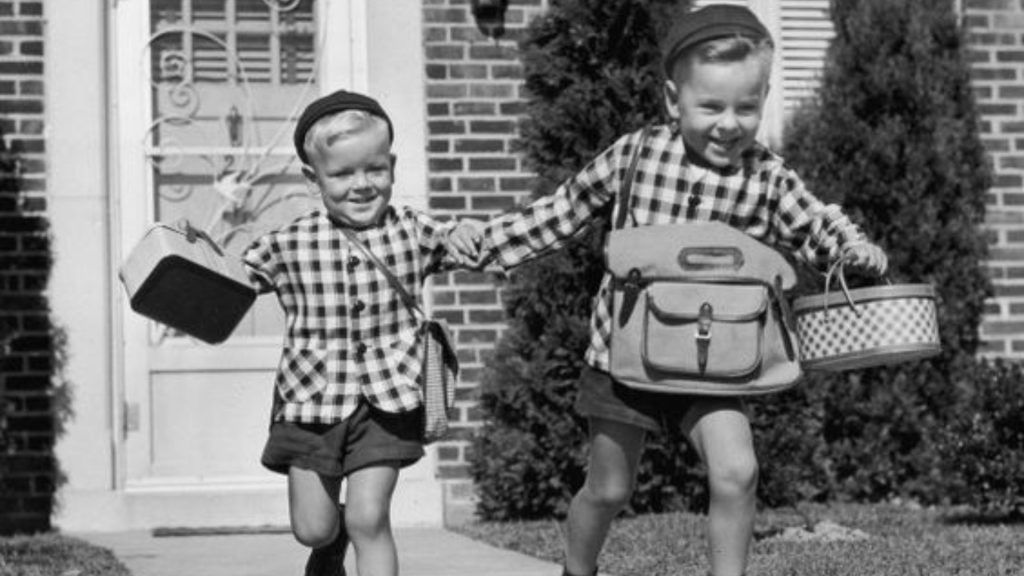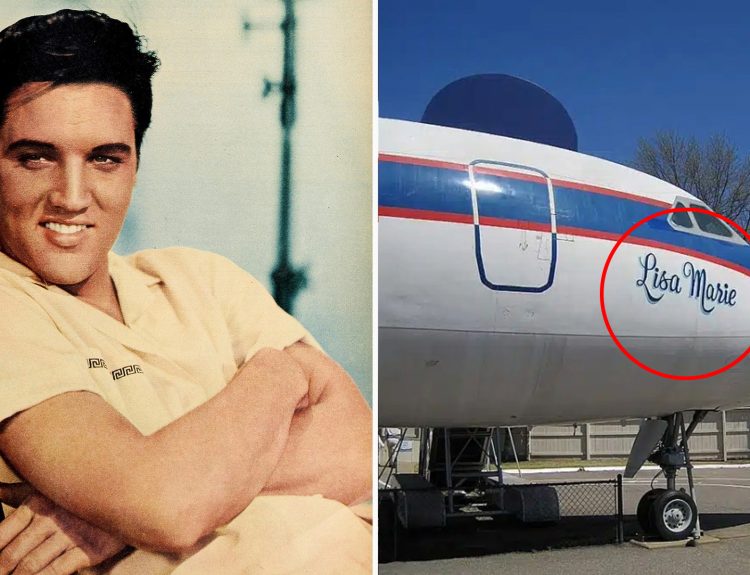Let’s take a dive into the interesting contrasts between Baby Boomer upbringing and today’s parenting styles. Embark on a historical voyage to discover how shifting norms and values have molded our parenting methods. Delve into the complexities of how generational changes highlight the choices that parents make in guiding, safeguarding, and advocating for their children amid the ever-changing landscape of our world.
Sunscreen Wasn’t A Popular Choice
Family trips have always been a timeless tradition, but in the past, they consisted of many hours spent basking in the sun without sunscreen. Families were unaware of the dangers of skin cancer back then.

In today’s day and age, parents are hyper aware of the importance of sunscreen use.
No Seatbelts Or Car Seats
A lot of Baby Boomers grew up without common safety measures that we consider essential today, this includes riding in cars without seatbelts or car seats.

Parents today place extreme emphasis on vehicle safety and follow the rules for child restraints.
Drinking Water From A Hose
It wasn’t uncommon to find a Baby Boomer quenching their thirst via a water hose, parents these days would advise against it for a variety of concerns, but mainly because of the water quality.

Moments like drinking directly from the hose were a common part of childhood play and enjoyment in the sun.
Cribs That Weren’t Safe
Cribs from the 1960s often lacked the safety features that we are accustomed to these days, sadly this often posed significant risk to infants.

The way they were built often had large gapped slats that would cause suffocation in an infant, and they were known to be painted with poisonous lead paint.
Cooling Off With Fire Hydrants
Kids in the 1960s embraced the summer tradition of using fire hydrants to get relief from the scorching sun. Essentially turning the city into a makeshift water park.

This cherished practice offered a communal and enjoyable method for kids to stay cool, forging memorable experiences of summertime joy.
They Didn’t Childproof
The concept of childproofing in the 1960s just didn’t exist, in fact there was an overall lack in household safety in general.

During this time there were few, if any, childproofing products on the market. Today it is a significant concern as parents “child proof” just about everything.
Playing With Toy Guns
Baby Boomers commonly played make-believe using toy guns.

Contemporary concerns about the possibility that these toy guns may negatively influence children cause many parents to steer their children clear of this type of play.
Participation Trophies Were Non Existent
The concept of participation trophies has become more prevalent over the years, marking a clear shift from previous times. In the past you were awarded for singular achievements, not rewarded for simply being a part of the game.

This shift reflects a larger cultural move towards inclusivity and the motivation for everyone to engage, recognizing the significance of the journey and the result.
Peanut Butter- School Lunch Staple
Baby Boomers grew up in a time when peanut allergies just weren’t a concern, having a peanut butter sandwich for lunch was commonplace.

Today, there is a heightened awareness of the risk of allergies, many schools have adopted strict no peanut policies.
Lack Of TV Parental Controls
Boomers had less supervision over TV content, granting them a broader access to shows that current parents most likely wouldn’t allow.

Shifts in media consumption dynamics have prompted a stricter protective position. Something that you just didn’t have to think about in the 60s.
No Supervision While Outside
Ever heard the older generations talk about how they were told as kids “don’t come home till the street lights are on?” Baby boomers were left to enjoy many outdoor activities unsupervised.

Parent’s today feel the need to diligently monitor their kids, this includes their outdoor play.
Internet Safety Concerns Weren’t An Issue
Boomers enjoyed a childhood devoid of the concerns that modern parents grapple with today, such as online safety, they didn’t have to worry about cyberbullying, or the risks of the internet.

During their time, the idea of digital threats was pretty much non-existent, absolving parents of the stressors of the potential online risks their children may be faced with.
Walking To School Unsupervised
Children from the Boomer era often shuffled off to school on foot alone, a practice that most modern parents wouldn’t even consider.

Despite changes in parental attitudes, nostalgic memories of these independent journeys underscore evolving perspectives on autonomy and responsibility of youth.
Hitchhiking
Youth in the 1960s embraced the act of hitchhiking as an adventurous way to travel from place to place.

Taking a ride with a kind hearted stranger was a widely accepted method of travel, especially for those traveling long distances. As years passed, safety concerns took hold, combined with a wider range of travel options and hitchhiking is far from socially acceptable now.
Playing Outside Until The Sun Went Down
There wasn’t as much emphasis on ‘stranger danger’ back then, parents were less worried about allowing their children to have the freedom to roam. As long as they were back before the sun went down, everything was fine.

During this time there was a distinct approach to community safety, this allowed for kids to be more independent in their local explorations.
Less Extracurriculars More Free Play
Today’s children are heavily involved in organized extracurriculars, unlike the Boomer generation. Modern children have a wide range of options, including team sports, dance classes, music lessons, or academic enhancements. These activities are designed to foster skill growth, social engagement, and avenues for accomplishment.

This shift in social perspective has brought up debates on the importance of creating a balance between such planned engagements and the need for free play.
Lawn Darts
The once-popular outdoor game of lawn darts, where people would throw sharp-tipped darts towards a target in the ground, has become a thing of the past as a result of modern safety protocols and concerns over possible injuries.

There has definitely marked a shift in prioritizing overall public safety.
Summer And After School Jobs
It was common for children from the Boomer generation to hold a job after school or during the summer, helping them cultivate a strong work ethic from an early age.

Labor laws and a greater focus on academic endeavors has shifted this focus, reducing the likelihood that children will have a job during their youth.
No Helmets On A Bike
Riding a bike was the societal norm during the Baby Boomer years, in fact the use of helmets at all was pretty much non-existent.

In contrast, modern parents recognize the importance of the use of safety gear and rarely allow their children to bike without wearing helmets.
Netless Trampolines
Trampolines didn’t have safety nets back then, they provided hours of netless acrobatic enjoyment for people of all ages.

Although they were a bit more risky then the now netted version, having a net on a trampoline just wasn’t an option back then.
Smoking In Public Places
Smoking was socially acceptable during the Boomer generation, and it was commonplace to smoke it in public places. As a society we have become more acutely aware of the health risks associated with smoking, which has resulted in stricter laws and banning of smoking in public places.

Where smoking in establishments like pubs, bars, and even homes was once the norm, the current trend sees people stepping outside to smoke, regardless of where they are. This shift illustrates a larger cultural focus on public health and the minimization of secondhand smoke exposure.
Blood Brothers And Sisters
In the 1960s, the term “Blood Brothers and Sisters” symbolized the strong connection and blood oaths that were prevalent among counterculture groups of the time.

These bonds were often solidified by the collective engagement in activities like social activism, music, and steering away from conventional societal standards.
Zero Screen Time
During the Boomer generation screens just weren’t as prevalent, this led to a childhood that consisted of freedom away from the constant digital display. However, in today’s digital age, parents struggle with monitoring and limiting their children’s constant exposure to screens.

Parents are faced with finding the balance between all the smartphones, tablets, computers, that have quickly become a part of daily existence.
Homemade Halloween Costumes
Boomer children often displayed their creativity by doing DIY Halloween costumes from various items they would find around the house. A very different contrast from today’s purchasing costumes from the shelves of whatever seasonal Halloween store.

It was common to see a kid trick or treating in his ghostly costume crafted from his white bedsheet. This point clearly shows the evolution of Halloween costumes, and the ingenuity and hands-on approach of years past.






